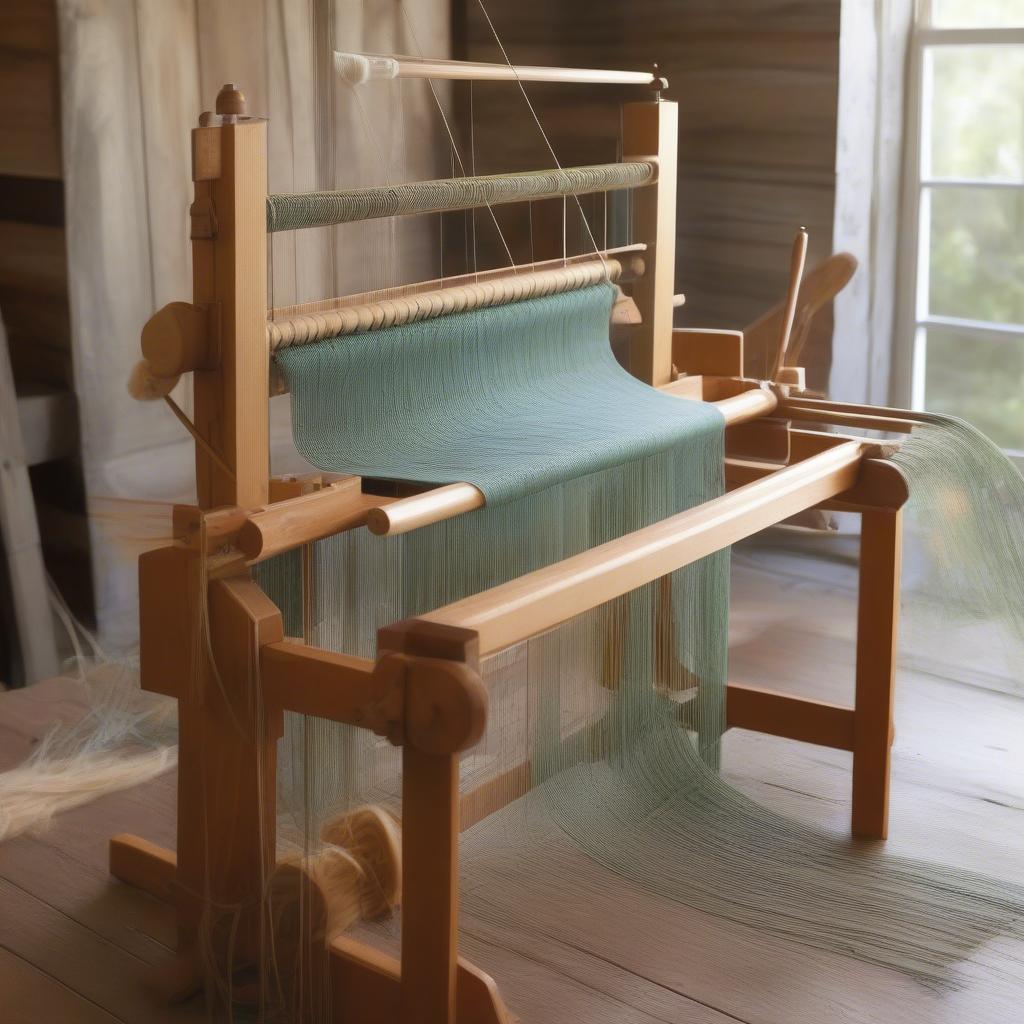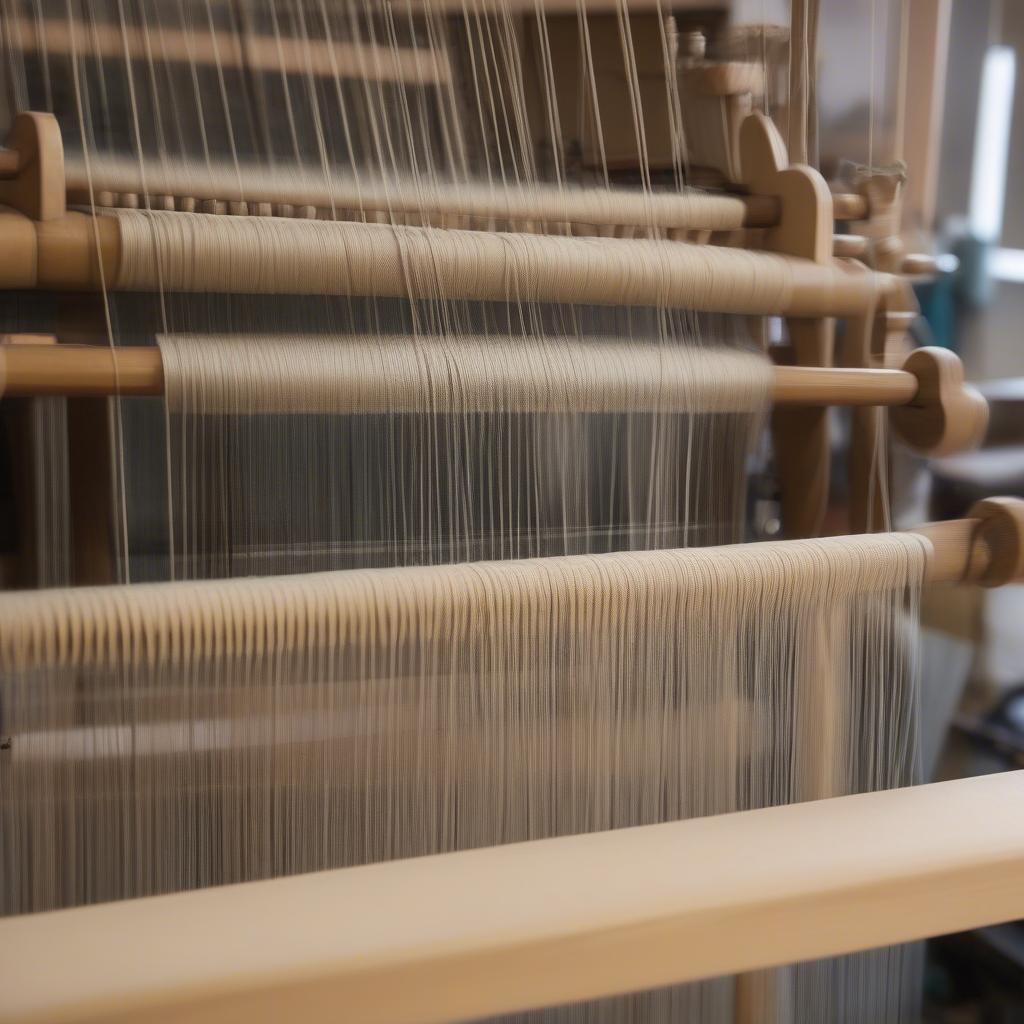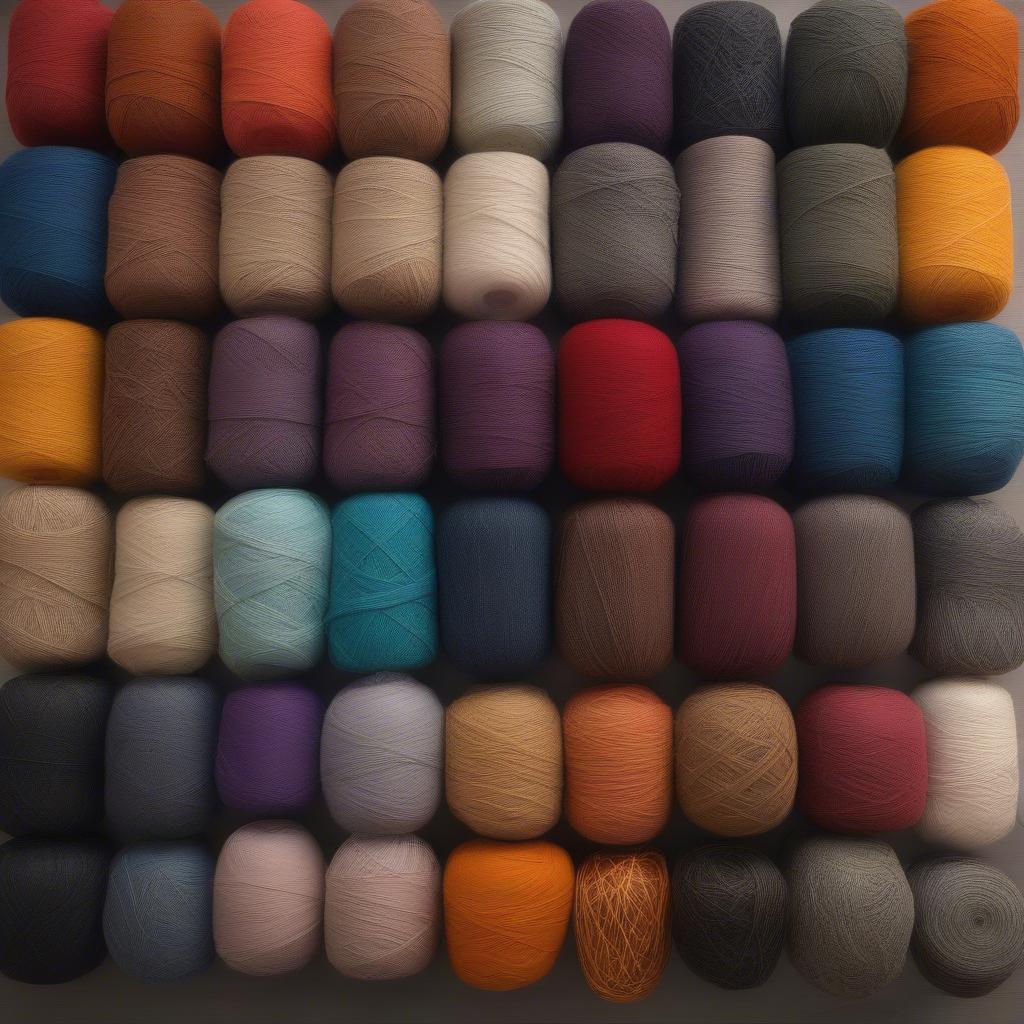Weave Table
How to Start Weaving on a Table Loom
Learning How To Start Weaving On A Table Loom opens up a world of creative possibilities, from intricate tapestries to simple yet beautiful table runners. This guide will provide you with a step-by-step approach to get you started on your weaving journey.
Gathering Your Supplies: What You’ll Need for Table Loom Weaving
Before you begin to weave, you’ll need to assemble a few essential items. This includes your table loom, yarn, a shuttle, a beater, a shed stick, and a warping board or warping pegs (optional but highly recommended). Choosing the right materials can significantly influence your final product. For beginners, a rigid heddle loom is often a great starting point. It’s user-friendly and perfect for exploring basic weaving techniques.
 Beginner Table Loom Setup with Yarn, Shuttle, and Beater
Beginner Table Loom Setup with Yarn, Shuttle, and Beater
Warping Your Loom: The Foundation of Your Weaving Project
Warping the loom, which involves threading the yarn onto the loom, might seem daunting at first, but with practice, it becomes second nature. You’ll need to determine the length and width of your desired project. This will dictate how much yarn you need and the number of warp threads. Using a warping board or pegs simplifies this process and allows for a more even tension. Precise warping is crucial for achieving a balanced and aesthetically pleasing final piece.
Weaving Your First Project: Simple Steps for Beginners
Once your loom is warped, the real fun begins! We’ll start with plain weave, the most fundamental weaving technique. This involves passing the shuttle carrying your weft yarn over and under the warp threads. The shed stick and heddle will help you create the openings (sheds) for the shuttle to pass through. weave a table runner.
 Basic Plain Weave Technique on a Table Loom
Basic Plain Weave Technique on a Table Loom
Understanding the Shed: Creating the Space for Your Weft
Creating the shed is a key aspect of weaving. The shed is the opening created by raising or lowering the heddle, allowing the shuttle to pass through. Different shed positions create different weaving patterns. Mastering shed manipulation is essential for progressing to more complex designs. You might even consider zapotec indian weaving table runners for inspiration.
Using the Beater: Packing the Weft for a Consistent Finish
The beater is used to pack the weft yarn tightly against the previous row, creating a consistent and stable fabric. The pressure applied with the beater affects the density of the weave. Experimenting with different beat rates can produce varied textures. weaving on table loom requires patience and attention to detail.
Exploring Different Yarns and Fibers: Adding Texture and Color to Your Weavings
Once you’re comfortable with plain weave, you can begin to experiment with different yarns and fibers. Varying the yarn weight, color, and texture can drastically change the look and feel of your finished piece. From the soft drape of wool to the rustic charm of linen, each fiber brings its own unique character to your work. Perhaps you are interested in finding used table weaving looms for sale.
 Variety of Yarns for Table Loom Weaving
Variety of Yarns for Table Loom Weaving
Troubleshooting Common Weaving Issues: Addressing Warping and Weaving Challenges
Even experienced weavers encounter challenges. Common issues include uneven tension, broken warp threads, and tangling weft yarn. Learning to troubleshoot these problems is an important part of the learning process. Don’t be afraid to unravel and start again. It’s all part of the journey! Consider looking up lily mills table top weaving loom instructions for specific guidance.
Conclusion: Embarking on Your Weaving Adventure
Learning how to start weaving on a table loom is a rewarding experience. With patience and practice, you can create beautiful and unique textiles. From simple scarves to complex tapestries, the possibilities are endless. So gather your supplies and begin your weaving journey today!
FAQ
- What is the best type of loom for a beginner?
- What kind of yarn should I use for my first project?
- How do I fix a broken warp thread?
- What is the difference between warp and weft yarn?
- How do I prevent my weft yarn from tangling?
- What are some easy weaving patterns for beginners?
- Where can I find more resources for learning to weave?
Common Weaving Scenarios
- Uneven tension: This can be caused by inconsistent warping or beating.
- Broken warp threads: This can happen due to excessive tension or knots in the yarn.
- Tangling weft yarn: This can be caused by improper shuttle handling or inconsistencies in the shed.
Further Exploration
Explore more weaving techniques and projects on our website. Learn how to weave different patterns, create unique textures, and explore the world of fiber arts.
Kêu gọi hành động: Khi cần hỗ trợ hãy liên hệ Hotline: +84 388 951 999, địa chỉ: Hanoi, Vietnam hoặc Tech Avenue, Suite 12, San Francisco, CA 94105, USA. Chúng tôi có đội ngũ chăm sóc khách hàng 24/7.
